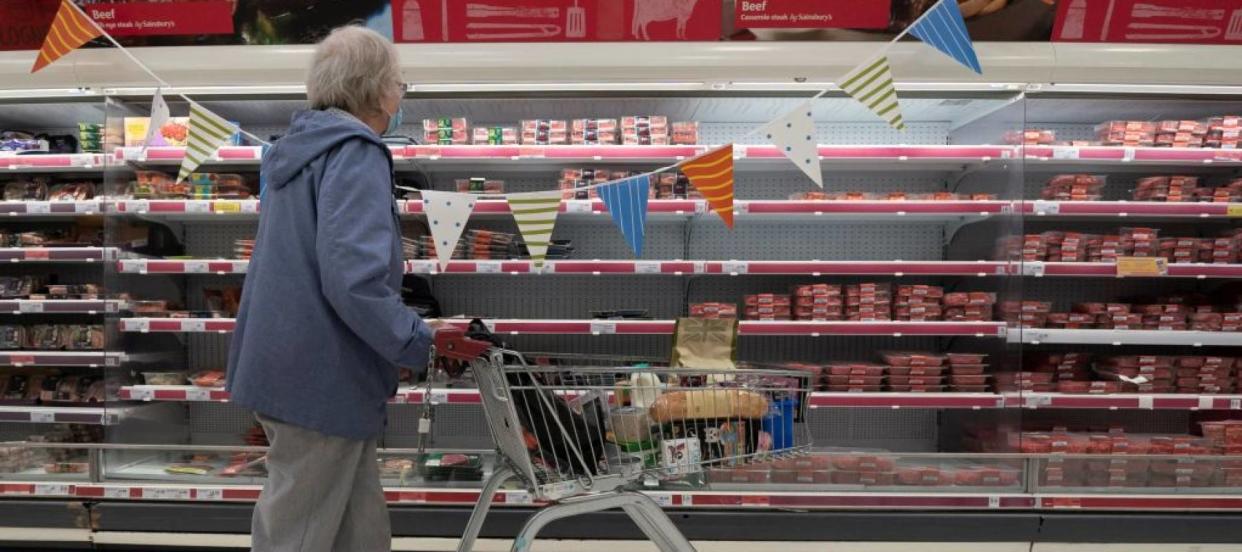Older Americans are struggling to afford food at an alarming rate — and it’s expected to get worse. Why U.S. seniors are getting left behind

At a time when retirees should be enjoying leisure activities and travel, they’re instead grappling with putting food on the table.
According to a new study featured in the Journal of the American Medicine Association (JAMA), food insecurity has greatly increased over the past 20 years for American families with adults over the age of 60.
The researchers discovered that 1 in 8 families with older adults (12.5%) struggled with food insecurity between 1999 and 2003. However, this number now sits at 1 in 4 families (23.1%) between 2015 and 2019.
Don't miss
These 5 magic money moves will boost you up America's net worth ladder in 2024 — and you can complete each step within minutes. Here's how
Car insurance premiums in America are through the roof — and only getting worse. But 5 minutes could have you paying as little as $29/month
Let US retail giants like Walmart, Whole Foods, and Kroger provide YOU with passive income — become a 'grocery landlord' with this 1 simple move
The U.S. Department of Agriculture defines food insecurity as a household’s socio-economic situation that leads to “limited or uncertain access to adequate food.”
Older people can’t catch a break right now. Their Social Security checks aren’t keeping up with inflation and may even be cut in the next decade.
Why is this happening?
One of the researchers, Cindy Leung, explains why seniors experience heightened food insecurity in a Washington Times interview. Although food prices are soaring for everyone right now, the assistant professor of public health nutrition at Harvard says that it’s a particularly difficult time for lower-income seniors, many of whom often also have additional medical costs to pay for.
The issue, according to the study, affects "all racial and ethnic and socioeconomic subgroups." Although food insecurity levels were significantly higher among Black and Hispanic families, chronic food insecurity for white families rose to 4.5% between 2015 and 2019 (up from 0.8%).
Food inflation may not have increased from January to February of this year, but it did increase 2.2% from February 2023, according to the most recent consumer price index numbers from the Bureau of Labor Statistics.
For a senior whose Social Security check’s cost-of-living adjustment only went up 3.2% this year, that’s not a huge help when they need to pay not just for food, but for housing and medical necessities.
Many seniors are living off Social Security alone. In 2020, roughly half of the unhoused population are 50 and over — a significant increase since the early 90s, when only 11% of homeless people were this age, according to research in the American Society on Aging’s journal, Generations.
Read more: Thanks to Jeff Bezos, you can now use $100 to cash in on prime real estate — without the headache of being a landlord. Here's how
Expected to get worse
In 2021, the American Society on Aging’s research says that 5.5 million older adults experienced food insecurity. By 2050, it’s estimated to surge to more than 7 million older adults.
However, researchers provide some solutions that could prevent this from happening. They believe that the Supplemental Nutrition Assistance Program (SNAP) is the best way to create a more food-secure population of older adults.
SNAP provides a monthly benefit to low-income families and individuals. The most recent numbers from the USDA say that 5.3 million households with older adults use SNAP. But AARP has done research to suggest there are many more eligible seniors out there who aren’t taking advantage of the benefit.
The researchers add that SNAP could be improved, particularly in how much money it provides every month to its recipients. There was a pandemic increase in SNAP benefits, but it ended in March 2023. SNAP benefits were cut by $95 to $250 a month, according to CBS News.
Researchers claim that this pandemic increase is a good experiment to see how SNAP helps alleviate food insecurity. CBS reports that the pandemic SNAP increase kept 4.2 million Americans out of poverty. Perhaps it can also help seniors.
What to read next
Can I collect my dead spouse's Social Security and my own at the same time? Here are 5 secrets of 'survivors benefits' you need to know
Car insurance rates have spiked in the US to a stunning $2,150/year — but you can be smarter than that. Here's how you can save yourself as much as $820 annually in minutes (it's 100% free)
Millions of Americans are in massive debt in the face of rising costs. Here's how to get your head above water ASAP
This article provides information only and should not be construed as advice. It is provided without warranty of any kind.
